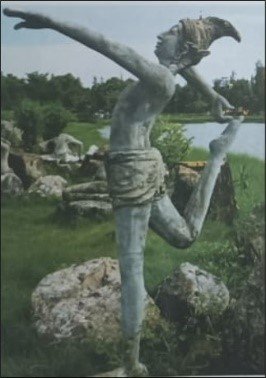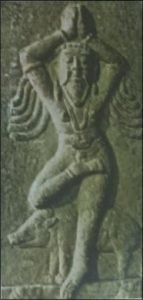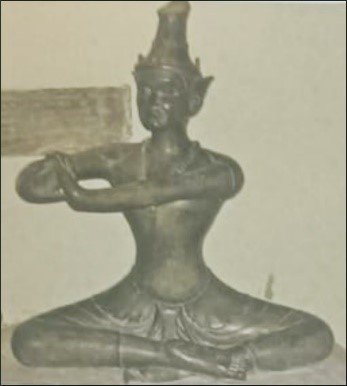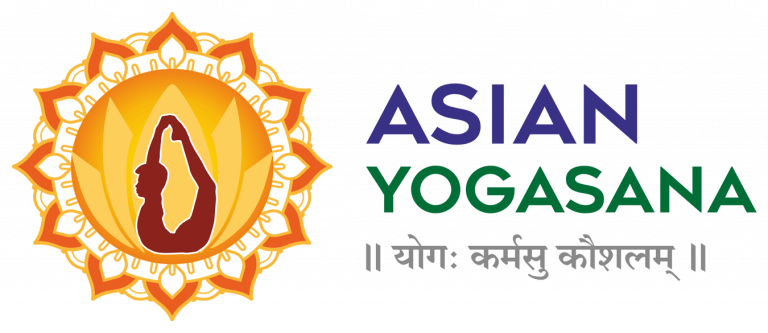आसनानि समस्तानि यावन्तो जीवजन्तवः।
चतुरशीति लक्षाणि शिवेन कथितानि च।।
asanani samastani yavanto jivajantavh |
caturasiti laksani sivena kathitani ca ||
Conceptual Understanding of Yogasana
The word Yogasana is derived by joining two words that are Yog and Asana.
The word is ‘Yog’derived from the Sanskrit word ‘Yuj’ which means to join together.
The word ‘Asana’ has been derived from the sanskṛta root as meaning ‘To Sit’. This derivative meaning has been used to explain the term physically as well as metaphysically. Physically it denotes a posture or a seat. Metaphysically it has been interpreted by several texts as ‘establishment in the original state’ (svasvarupe samāsannatā-SSP).
The metaphysical aspect of asana is found expressed in the texts of nathayogis like siddha-siddhanta-paddhati, jñānadīpa-bodha, sabadi of yogi vicaranatha. In Jainayoga, asana is considered as withdrawing from parabhava (extraversion) to svabhava (introversion). Acārya haribhadra calls it sukhasana.
In Rajayogarahasya and Trisikhibrahmana (mantra-29) asana is considered as ‘udasinabhava’ meaning “attitude of indifference’.
In kamadhenu-tantra-31 different meanings are attributed to each of the letters in the word asana, ‘a’ meaning atmasamadhu’ (self-realization), ‘sa’ meaning sarvaroga-pratibandhaka’ (preventive of all diseases), and ‘na’ meaning “siddhi prapti (attainment of miraculous powers).
Physically speaking asana has two distinct meanings. Firstly, it denotes the ‘seat’ on which the sadhaka sits for his meditation practice. Secondly, it implies different bodily postures used during yog sadhana.
Asana as a posture
Asana as a posture has great antiquity. In all the mystical traditions we find the use of a particular posture for meditation.
asana is one of the ancient yogic practices forming a base for all other practices and plays an important role in every kind of yoga sadhana. In traditional astanga yoga, asana forms the third step after the first two, namely, Yama and Niyama.
The characteristic features of asana concisely expressed by patanjali in his yogasütras are stability and comfort (sthirasukham-asanam). These suggest that asana should be stable and comfortable. These two characteristics indicate the psychophysical nature of the asana and practically all the questions related to asana could be answered in the light of these two characteristics. Though the asana is practised bodily, it brings tranquilizing effect on the mind.
The objective of yoga is citta-vrtti-nirodha and the same is attempted through all the steps of yoga. Asana is no exception to this. The relationship of the stability of the body in asana with the control of mental functions has been beautifully explained as follows:
“One who can be stable in the asana is fit to undergo yogic practices. With unstable body one cannot have stable mind. When asana becomes stable surely the mind also gains stability. The movement of prana indeed slows down. The fickleness of senses too is surely set at rest. Then one gets established in yoga and therefore one should practise asana” (yogarasayana).

Asana from historical perspective Asana in Pre-Vedic period

Asana in the vedas and upanisads
In the vedas we do not get direct reference to the word asana or names of asanas. Yet we do get indications of some modes of sitting. The word ‘mitajñu’ in rgveda (7-95-4, 3-59-3) means assuming a squatting position. Another word abhijñu’ (rgveda 1-30-7-10, 3-39-5, 7-2-4) means sitting on toes with knees raised. Similar posture is practised by Jainas during meditation. The expression ‘janu a acya’ in Satapatha brahmana (2-4-2-2) means ‘with leg folded. In the prescribed ritual for manes it is customary to fold left leg while for divine beings right leg is folded, the other knee being raised during sitting. These prescriptions are obligatory. Sayaṇabhasya on the Taittiriya-aranyaka has a reference to a pose similar to the Gomukhasana, although no specific name is given in the text.
There is no mention of asana in the earliest upanisads. The first mention is found in Svetasvatara Upanisad (11-8).
Asana in Epics
Asana in Jainayoga
From the available sources regarding sadhana of Bhagavan Mahavira we find the mention of number of asanas in which he was practicing dhyana.
In aupapatika-sutra we get a reference to a typical asana in which the Sramaņas were found to meditate. In this asana the two knees were raised and head lowered. In this very text there is a discussion about asanas under the analysis of kayaklesa. Asanas.
Dasasruta-Skandhasutra mentions about practising Dhyana in different acārya haribharda, the great writer on Jaina yoga uses the word Sthana for asana in his Yogavimsika. The use of the word ‘Sthana, for asana seems most appropriate because the term asana suggests sitting posture while sthana refers to any condition of the body assumed for meditation.
In oghaniryuktibhasya three types of asanas or sthana have been described as ürdhvasthana, nişadana-sthana and sayana-shtana. asanas in standing position are called ardhvasthana. They have been divided into seven categories as follows:
- Sadharaṇa
- Savicara
- Sanniruddha
- Vyutsarga
- Samapada
- Ekapada
- Grdhroddina
This shows that the practice of asanas was systematized and was in vogue at one time. However, later on it was relegated to background and today we are at loss to establish it again in practice.
Although the tradition of Jainayoga does not coincide with the hathayogic practices, we do find the influence of hathayogic practices from 8th to 12th century AD. Due cognizance seems to have been taken by later Jaina acāryas like Somadeva, Hemacandra, Subhacandra etc.
Hemacandra in his yogasastra mentions the following asanas suitable for dhyana:
Paryanka, Vira, Vajra, Abja, Bhadra, Danda, Utkatika, Godohika, Kayotsarga, Uttanaka, Pārsvasayi, Naisadhika, Lagadaśāyi, Dandayatika and Amrakubja.
Among Jainas five types of asanas called Moksāsanas were specified which were Paryankasana, Ardha-paryankasana, Vaira, Khadga and Vira. These were the postures assumed by a Jaina monk when he had attained or was on the way of attaining salvation (Moksa). Paryankasana is also known as Padmasana or Samparyankasana.
Asana in Jainayoga

Asana in Smrti literature
In one of the oldest and important smrtis, namely, Brhadyogiyajñavalkya- smrti we get elaborate description of asana, both as a seat as well as a posture. The seat is described to be ‘Cailajinakusottara’ which is neither too low nor too raised, which is used for taking a posture of padmasana. This posture is elaborately described.
Another important text named Vasistha-samhita-yogakanda which follows Vedic tradition, elaborately describes asanas such as Svastika, Gomukha, Padma, Vira, Simha, Mayūra, Kukkuta, Kurma, Bhadra And Mukta.
Asana in Puranas
Sankaracārya on asana
sankarācārya describes asana in relation to Dhyana and Samadhi in Brahmasutrabhasya (4.1.7-11), Dhyana is to be carried out in a seated posture. The reason given is that the mind gets distracted while standing, walking or running and one is likely to fall asleep while lying down. In this connection he quotes Bhagavadgita (6.11) and also refers to the yogasastra where Padma and other asanas are described. Bhagavadgita (6-11) says that asana is the first among the means of Dhyasayoga. It mentions the seat to be made of kusa- grass, covered with hide and then with cloth.
Period of some of the famous scriptural works of ancient times has been presented below:
Chronological table of some important works of ancient times
| 4000 BC-1000 BC | Period Of Vaidika Samhitas, Brahmanas And Upanisads |
| 800 BC-400 BC | Srauta-Sutras |
| 500 BC 300 BC | Dharma-Sutras |
| 500 BC 200 BC | Bhagavadgita |
| 150 BC-100 AD | Mahabhasya of Patanjali |
| 100 BC 300 AD | Yogastra of Patanjali |
| 100 BC 300 AD | Yajnavalkya-Smrti and Visnu-Dharmasatra |
| 250 AD 325 AD | Samkhya-Karika of Isvarakrsna |
| 300 AD-600 AD | Some of the extant poranas such as Vayu, |
| Brahmanda, Visnu, Matsya, Markandeya | |
| 400 AD- 500 AD | Yogasutra-Bhasya of Vyasa |
| 600 AD- 900 AD | Most of the metrical Smrtis such as those of |
| Parasara, Sankha, Devala and some of the Puranas | |
| like Visnudharmottara, Agni, Garuda | |
| 7th Century AD | Arahasya of Srinatha muni |
| 788 AD-820 AD | Sankaracarya, the authors of Bhasyas on the Geeta. |
| principal Upanisads, Vedanta-Sutra, Patanjala- | |
| Yogasitra-Bhasya-Vivaranam | |
| 820 AD-900 AD | Vacaspati, the author of Bhasya named |
| Tatvavaisiradi on Patanjala yogasütra | |
| 10th Century AD | Goraksa-sataka of Goraksa-natha |
| 10th Century AD | Siddha-Siddhanta-Paddhati of Goraksa-natha |
| 1005 AD-1055 AD | Bhoja, the author of Rajamartanda, a commentary on yogasatra |
| 12th Century AD | Yogavartika of Vijnanabhiksu |
| 12 Century AD | Yogasastra of Hemacandra |
| 1250 AD | Vasisistha-Samhita of Vasistha |
| 14 Century AD | Hathapradipika of Svatmarama |
| 1623 AD | Yukta-Bhava-Deva of Bhavadeva-Misra |
| 1625-1695 AD | Hatharatnavali of Srinivasa-yogi |
| 1670 AD 1750 AD | Nageia or Nagojibhatta, an encyclopaedic writer |
| on Dharmasastra, Yogasütra (Vrtti) and other Sastras | |
| 17th Century AD | Gheranda-samhita of Gheranda |
| 17th Century AD | Maniprabha of Ramânanda Sarasvati |
| 17th Century AD | Hathasanketa-Candrika of Sundaradeva |
| 17th Century AD | Hatha-Tatvakaumudi of Sundaradeva |
| 1718 AD | Joga-Pradipakã of Jayatarama |
| 18 Century AD | Yogasiddhanta-Candrika and Sutrantha-Bodhini |
| by Narayana-Tirtha |
Synonyms of asana
Multiplication and classification of asanas
1) Based on the body positions:
2) Based on the names of major deities
3) Based on the Variation in the asanas
4) Based on the Traditions
5) Based on the Modification in the original technique
6) Based on the Purpose
Asanas could be classified according to the purposes like Meditative asana, Conditioning asana, Relaxative asanas. The purpose of Meditative asanas is to enable one to sit comfortably and for long hours in Meditation. While that of conditioning asanas is Nadiśuddhi as stated by the Hathasanketa-Chandrika. By permutation and combination different varieties of asanas have been formed. Multiplication of asanas creates a greater space for the individual to choose the variety of asanas suited to one’s needs and purpose.
[Reference – Encyclopedia of Traditional Asanas, By Dr.Manohar Laxman Gharote,
Published by –The Lonavla Yoga Institute (India)]

